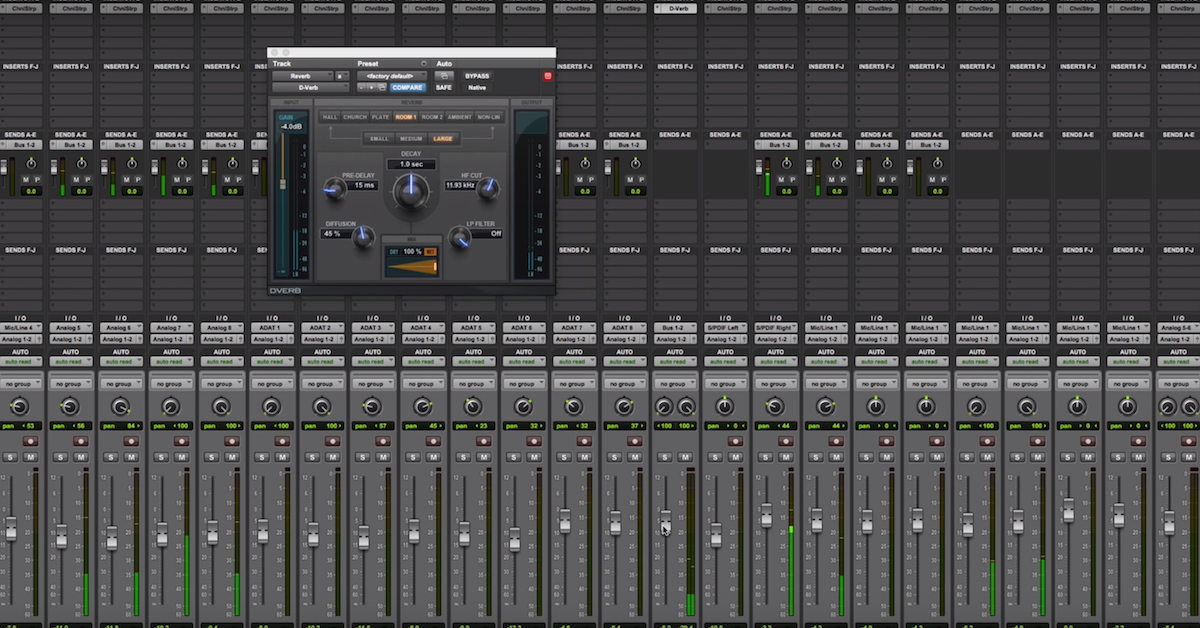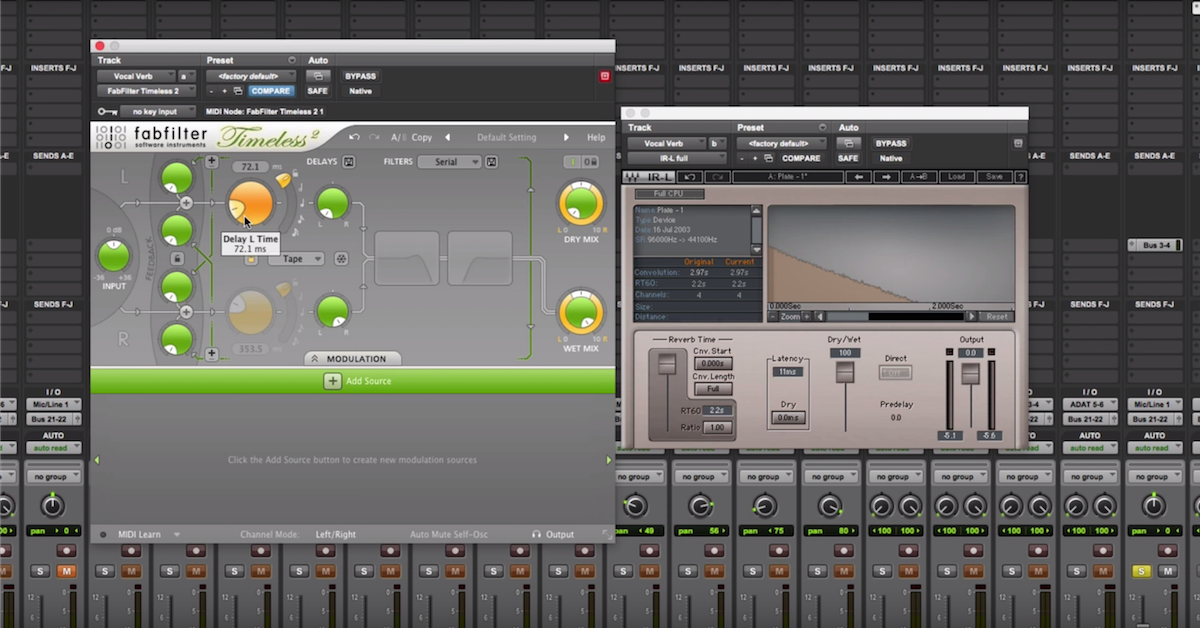How to Use Reverb on Vocals in a Mix
Article Content
Ah, reverb, the sound of space — the extra special magic that takes a sound and creates a universe around it. But how do you get that perfect extra-extra special magical magic that takes the listener’s breath away? With all the options for reverbs and all the variable parameters within a reverb, it can seem overwhelming. Do we choose plates, halls, rooms, weird verbs, lots of pre-delay, no pre-delay, heavily weighted early reflections, late reflections — oh my…
The reality is, I could talk about reverb for five hours to cover the bases, but for this article, I’m just going to focus on the star of the show: vocals.
Here are five considerations to take into account in order to craft the perfect soundscape for your vocal.
1. The Emotional Intention of the Song
Reverb is quintessentially tied to emotion. All processing is really … but with reverb, the emotional implications are obvious. To exemplify this idea, I want to compare Billie Eilish’s “Bury A Friend” to Adele’s “Hello”.
In the latter, Tom Elmhirst uses reverb to bring out the inherent loneliness written into the lyrics. On the very first “hello”, we hear the reverb return like an empty home answering Adele’s question. In the former, Rob Kinelski uses no reverb at all on Billie’s vocal, creating an uneasy sense of closeness bringing out the creepy factor to the fullest.
Mixing is like sailing a ship on the ocean. Emotion is the beacon that tells us where to steer. So before even thinking about what types of reverb to pick and how to set it, we need to be thinking about what feelings we are trying to augment.
2. Timing
Regardless of what reverb we are using, one factor will always come into play: the timing. Reverb is a fundamentally rhythmic effect. Long reverbs are great for gluing and connecting one vocal line to the next. But long reverbs come with a price — they slur the rhythm. For ballads this is fine — ballads aren’t rhythmically driven. For dance music, this can be a problem. Short reverbs help preserve the bounce of a groove better because they allow for more separation between the notes. When I’m thinking of timing my reverb the first question I ask myself is “does the song want connection or bounce?”
Now, sometimes we need both. Sometimes I’ll be mixing a club record and I need that bounce, but I need to catch a vibe too. So I cheat. I filter the reverb so it’s out of the way of the kick (high-pass around 300 Hz), and I sidechain the reverb return to the kick drum with a 1/4 note release time so the verb ducks the kick and pumps with the groove. This is a common EDM technique but translates very well to any dance type of record.
3. Plates, Halls, Rooms, … help me…
Rather than think about plates vs halls vs rooms I find it’s better to think about the overall characteristics of the reverb unit itself. Regardless of whether you select a hall or room on Pro Tools D-Verb, it’s still going to sound like a gritty, hashy reverb. And this is actually more important than the exact setting being used. One plate is going to sound different from another and both will sound different than a digital version. I find that any unit sounds more like itself than anything else.
That said, there are fundamental differences between these reverb constructs.
Plates, for example, have high-frequency precedence, a linear decay, and high echo density — making them shiny, smooth, and open. Great for bringing a bit of pop and polish to a vocal.
Halls have complex and separated echoes, even frequency damping, and usually a bit of weight to the low end, making them great for making something sound big, expansive, and prominent.
Rooms sound like natural spaces which are great for setting a tone of naturalness, intimacy or honesty.
The important part is to learn the “personality” of the reverb specifically in question and knowing what type of feel it will compliment.
4. Contrast
Reverb works best when there’s contrast within the mix. For example, if we are setting the vocal upfront and personal, it helps to have something that feels further away. We can create this contrast through our reverb parameters. A reverb that leans on a longer pre-delay with mostly early reflections will sound very close, while a reverb set to short pre-delay and mostly late reflections will sound further away. And of course, less reverb will sound closer while more reverb will sound further. Using this understanding we can set our vocal wherever we’d like in terms of the front-to-back imaging of our mix.
Contrast can also exist in song structure. A common mix technique is to use tighter, closer reverb sounds during the verses as our vocalist tells the story of the song, and switch to a more expansive reverb sound as our singer belts away on the chorus. This creates the sense of the space opening up into a bigger world.
Sometimes it’s nice to even ride the reverb return or parameters on individual words and phrases, just to complement the story of what’s happening. Perhaps the line becomes uniquely intimate or solemn, or maybe the singer opens up into a more grand feeling. Altering the reverb through automation to compliment this can help the feel for the listener.
5. Experimentation
For me, the most important part of vocal reverb is experimentation. Lately, I’ve been fascinated with the concept of making something have a strong and present ambience while not feeling swamped with reverb; or, while keeping the vocal still forward. This has led me to play with multiple reverbs layered over top of each other — one with a long pre-delay and extended tail, the other with a shorter pre-delay but a shorter reverb with mostly early reflections. I’m also a big fan of tying delays into my reverb send to create the perception of a bigger reverb without having to swamp the vocals.
In general, I just like to have fun. I conceptualize effects and sounds that go with the vibe of the record and see if it works. If the song is supposed to be a little gritty and grimy I might try chaining distortion into my reverb chain. Or sometimes I’ll just challenge myself by taking a full, undulating reverb and playing it up as if it were a production element, and then using EQ to allow it to fit in the mix.
There aren’t really any rules to use reverb on a vocal, so it’s important to try things and discover what works for the song and what works for you.





